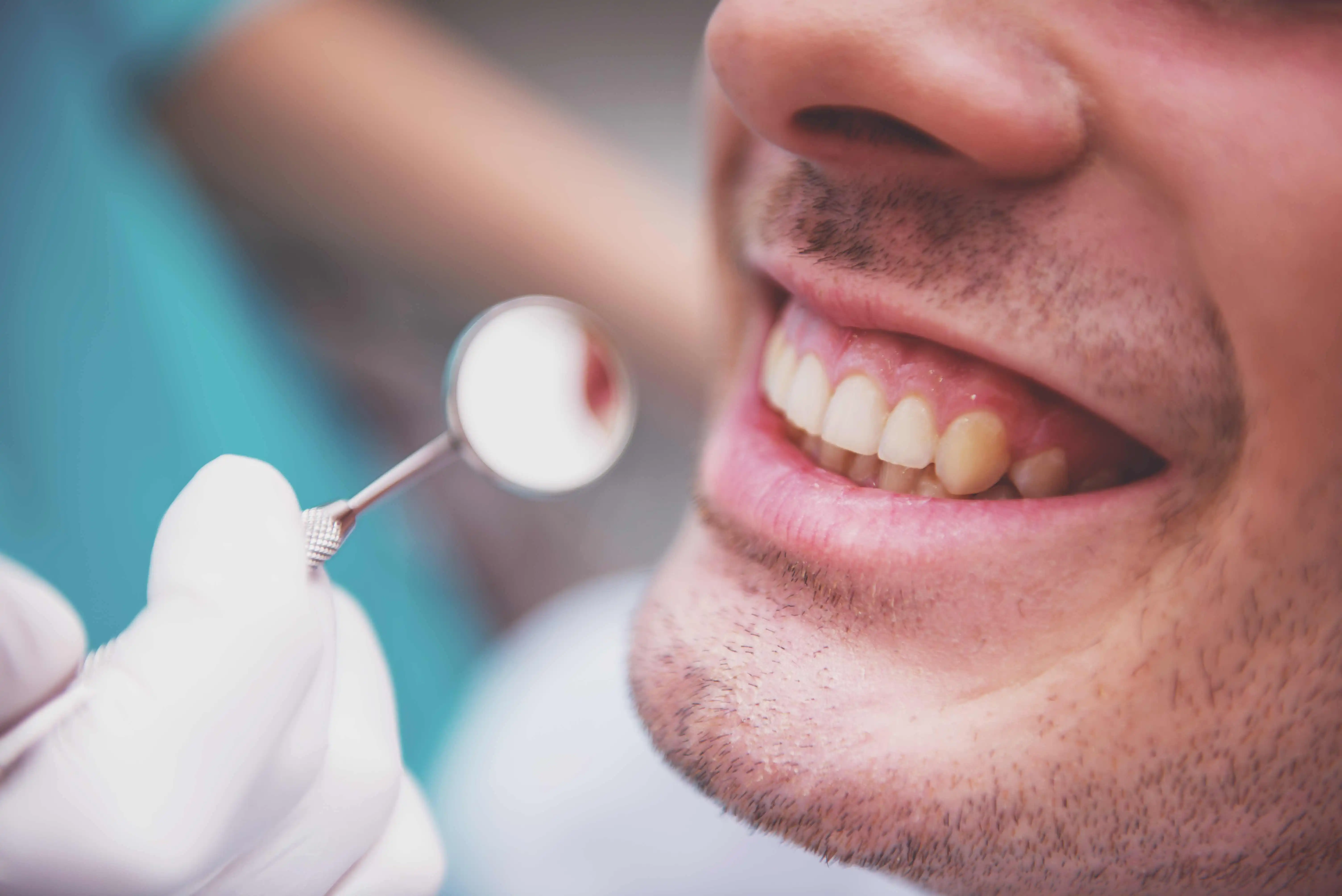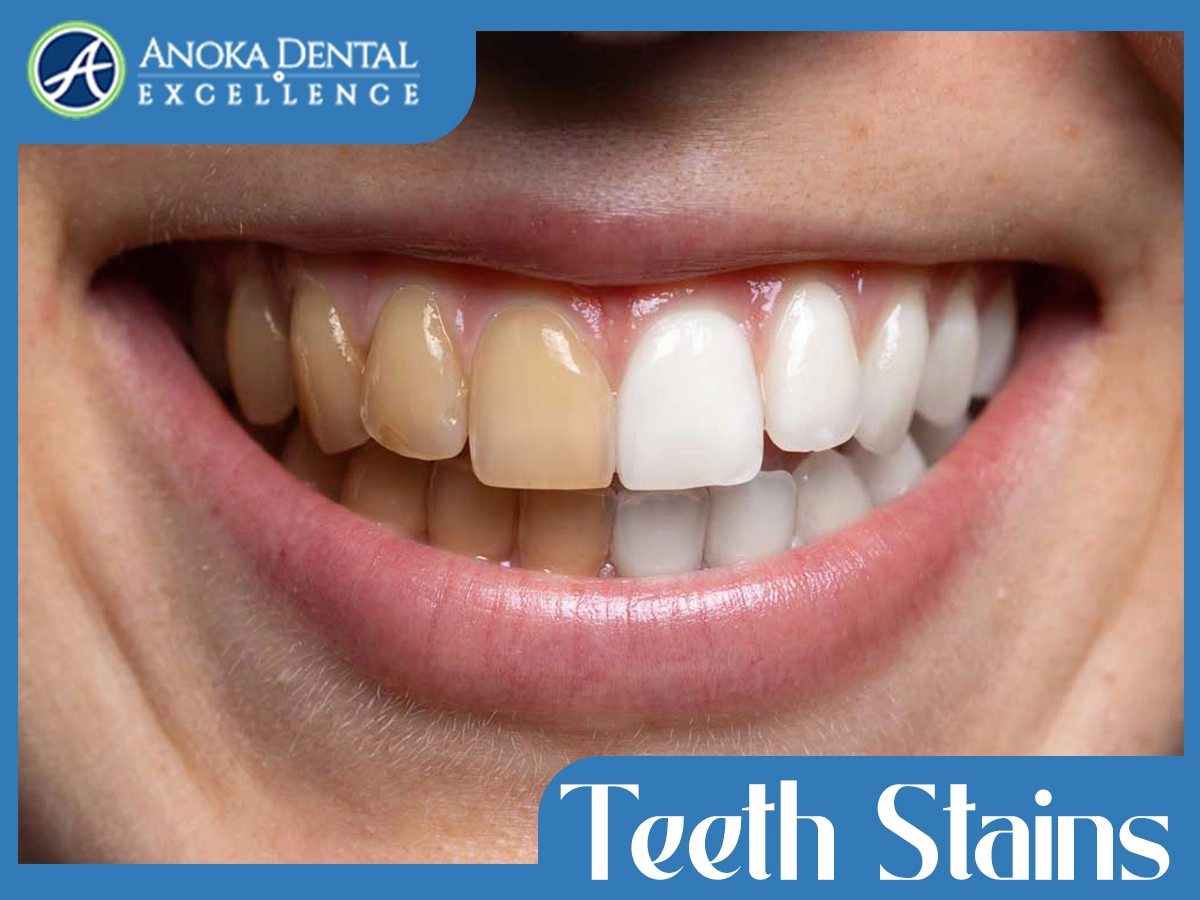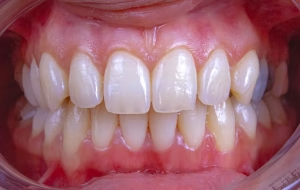Are you afraid to smile because of your stained and yellowing teeth? Teeth stains are when the color of the teeth changes, and they don’t look as bright or white as before. The teeth can darken, turn from white to different colors, or develop white or dark spots in places.
Teeth stains occur on the tooth’s surface or below the tooth enamel for many reasons, including lifestyle habits like foods/drinks such as coffee, tea, colas, wines, pasta, potatoes, smoking or chewing tobacco, and many more. The good news is that you can save these teeth stains from forever taking away your beautiful smile as these are treatable and preventable.
Here is everything you should know about teeth stains, their cause, types, and treatment.
Table of Contents
Types of Teeth Stains
Your teeth are like snowflakes – no two are exactly alike. And just as snowflakes, each person’s teeth can have different stains. Here are three main types of teeth stains:
-
Extrinsic Stains
Extrinsic teeth stains discolor the outer layer of each tooth, i.e., the enamel that protects dentin (the softer part of the tooth underneath). Here’s how these teeth stains develop:
- The enamel, the hardest part of the tooth, comes in contact with everything you put in your mouth, whether it’s red wine, berries, or nicotine.
- Over time, this contact leads to the enamel absorbing some of the colors of the items you consume.
- Hence, over time, it causes extrinsic stains to develop.
The good news is that these stains don’t move to the tooth’s dentin below the enamel. So, extrinsic stains are the easiest to remove. You can easily get rid of them by using home teeth-whitening treatments or by scheduling a teeth whitening session at your trusted dental clinic, i.e., Anoka Dental!
-
Intrinsic Stains
Intrinsic teeth stains happen when the inner part of your tooth (dentin) becomes discolored. This type of stain occurs due to:
- A change in medications during development (tetracycline antibiotics taken by either mother or child during pregnancy or childhood can cause intrinsic staining)
- Excessive fluoride intake during development
- Dental trauma
- The aging process
Removing intrinsic stains is more challenging than extrinsic stains as they require professional treatment. However, you can still do some things to help minimize their appearance, such as using a whitening toothpaste or undergoing multiple teeth whitening treatments.
-
Age-Related Stains
As you age, the enamel on your teeth starts to thin and becomes less porous, making it more difficult for saliva to wash away surface stains, leading to your teeth’s yellowing. In addition, the dentin underneath your enamel darkens with age.
Age-related staining is common and inevitable – but that doesn’t mean you have to accept it! You can still maintain a bright, white smile by practicing good oral hygiene and regularly visiting your dentist for teeth cleanings.
What Causes Teeth Stains
There are several causes of tooth discoloration, including:
- One of the most common causes of tooth stains is food and drink containing strong pigments. Coffee, tea, dark-colored fizzy drinks, red wine, and dark-colored fruits such as blueberries can cause teeth staining.
- Another common cause is smoking cigarettes and chewing tobacco, and these habits can both cause teeth to become discolored.
- Poor dental hygiene can also cause plaque buildup and may cause the teeth to appear discolored.
- Medical treatments like medications for high blood pressure, chemotherapy, antihistamines, and some antipsychotic medications can sometimes cause tooth discoloration.
How to Get Rid of Teeth Stains?

Many products and procedures can whiten your teeth and eliminate or reduce the appearance of stains. Generally speaking, there are three broad categories of teeth whitening options. They include:
- In-office treatment is an excellent option for teeth whitening. In this method, your dentist will use a higher concentration of hydrogen peroxide than over-the-counter products to remove stains from your teeth. In-office treatment works quickly, and the effects usually last longer than other methods; however, it is a little expensive.
- At-home treatments through your dentist are another option. Sometimes the dentists can make at-home custom trays for your teeth. You just need to add a gel to the tray and wear it on your teeth for up to one hour per day or as your dentist recommends.
You may wear the trays for a few weeks to achieve results. This method is less expensive than in-office treatment, but it may take longer to see results.
- Over-the-counter products are the third option for teeth whitening. Whitening toothpaste and strips can diminish surface stains, but over-the-counter products are the most affordable and least effective option.
Remember, the best option for teeth whitening depends on your individual needs and preferences. Talk to an expert dentist to learn more about these options and determine which method is suitable for you.
Do You Require Professional Solutions to Remove Teeth Stains? Contact Anoka Dental Today!
Are you taking excellent care of your teeth yet can’t get rid of those pesky teeth stains?
At Anoka Dental, we’ve seen every type of teeth staining. We will examine your teeth, recommend the best ways to remove teeth stains and let you decide how you want to move forward. To schedule your next appointment, contact us today!




